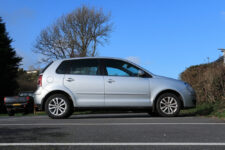The Law, Defences and Penalties for Carjacking in New South Wales

It has been alleged that shortly after 4pm on Monday, 14 September 2020, a man armed with a knife approached a silver Volkswagen which was parked in a carpark between Yambil Street and Canal Street, Griffith in the north-western Riverina region of NSW.
As the female driver exited her vehicle, the man allegedly threatened her with the knife, demanding she put return her handbag to the car, start the engine and walk away.
The woman reportedly complied, before the man drove the car away.
The man is described as of Caucasian appearance, in his fifties, short grey hair, 170cm to 180cm tall, wearing a grey polo shirt, black pants, dark hooded jumper and frameless sunglasses.
Investigations are continuing.
The offence of carjacking in New South Wales
Following a series of reported carjackings in New South Wales, the state parliament passed the Crimes Amendment (Gang and Vehicle Related Violence) Bill on 21 November 2001.
Among other things, the Bill led to the insertion of section 154C(1) into the Crimes Act 1900 (NSW).
The offence is titled ‘Taking motor vehicle or vessel with assault or with occupant on board’ and carries a maximum penalty of 10 years in prison.
To establish the offence, the prosecution must prove beyond reasonable doubt that the defendant:
- Assaulted another person with intent to take a motor vehicle or vessel,
- Took and drove the motor vehicle or vessel, or took it with the intention of driving it, and
- Did so without the consent of the owner or lawful occupier of the motor vehicle or vessel.
An ‘assault’ is where a person:
- Made unauthorised physical contact with another person, or
- Caused another person to apprehend immediate and unlawful violence, and
- Did so intentionally or recklessly.
A ‘motor vehicle’ is any vehicle built to be propelled by a motor which forms part of the vehicle.
A ‘vessel’ is a water craft of any description used or capable of being used as a means of transportation on water.
Standard non-parole period
The offence carries what’s known as a ‘standard non-parole period’ (SNPP), which is a reference point for the court when it is deciding the time an offender must serve in prison before being eligible to apply for release on parole.
The SNPP for the offence is 3 years in prison.
Legal defences
It is important to be aware that where a legal defence is raised on the evidence, the onus then shifts to the prosecution to prove beyond reasonable doubt that the defence does not apply in the circumstances.
The defendant must be found not guilty if the prosecution is unable to do this.
Legal defences to carjacking and aggravated carjacking charges include duress, self-defence, necessity and ‘claim of right’, which is where a person genuinely believed he or she was legally entitled to the whole of the property.
Aggravated carjacking
The maximum penalty for the offence increases to 14 years in prison where it was committed in ‘circumstances of aggravation’, which is where the defendant:
- Was in the company of another person or persons,
- Was armed with an offensive weapon or instrument, or
- Intentionally or recklessly inflicted actual bodily harm on any person.
‘Offensive weapon or instrument’ means:
- A dangerous weapon, or
- Anything made or adapted for offensive purposes, whether or not it is ordinarily used as a weapon or capable of causing harm.
A ‘dangerous weapon’ is:
- A firearm or imitation firearm,
- A prohibited weapon, or
- A spear gun.
‘Actual bodily harm’ is that which is more than just ‘transient or trifling’. It includes lasting scratches, bruises and abrasions.
The SNPP for aggravated carjacking is 5 years in prison.
The defences of self-defence, duress, necessity and claim of right also apply to this offence.
Going to court?
If you have been accused of a criminal offence and are going to court, call Sydney Criminal Lawyers anytime on (02) 9261 8881 to arrange a free first appointment with an experienced defence lawyer who will advise you of your options, the available defences and fight to achieve the optimal result.
Our lawyers represent clients in all New South Wales courts.






